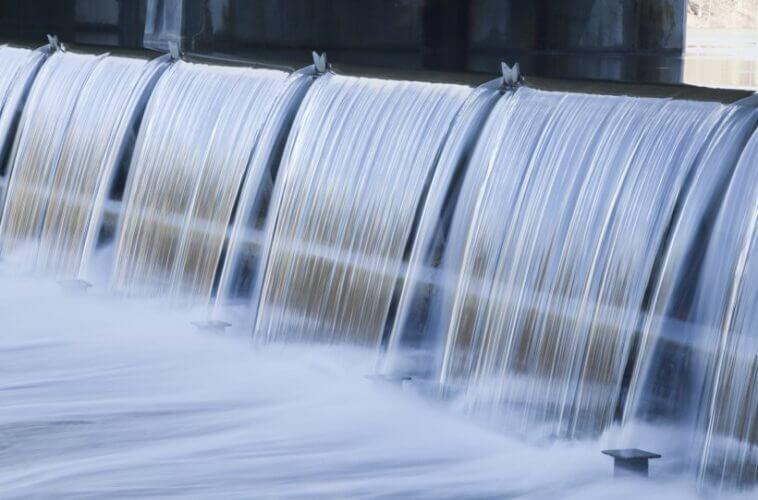Hydropower has been around for more than a century and is currently the nation’s largest source of clean, domestic, renewable electricity. What could its role look like in the year 2050?
Providing about 7 percent of the nation’s electricity, hydropower supports more than 143,000 jobs in engineering, manufacturing, construction and utility operations and maintenance — all while improving the environment and strengthening our economy. Additionally, pumped-storage hydropower represents 97 percent of all energy storage in the United States, offering the flexibility and reliability the electricity grid needs to deliver affordable clean energy to American homes and businesses.
So what does the future of hydropower look like? To answer that question, over the past two years, the Energy Department has collaborated with more than 300 experts from more than 150 hydropower industry companies, environmental organizations, state and federal governmental agencies, academic institutions, electric power system operators, research institutions, and other stakeholders to explore how it could evolve in the coming decades.
These experts conducted a first-of-its-kind comprehensive analysis to evaluate future pathways for hydropower in the United States from the present through 2030 and 2050. The Hydropower Vision report defines the societal, environmental, and economic benefits of hydropower in a scenario where U.S. hydropower could grow from 101 gigawatts (GW) of combined generating and storage capacity in 2015 to nearly 150 GW by 2050, with more than 50 percent of this growth by 2030.
KEY FINDINGS OF THE HYDROPOWER VISION REPORT
Although hydropower is the nation’s oldest form of renewable electricity, many actions and efforts remain critical to the further advancement of domestic hydropower as a key energy source of the future. These include continued technology development that lowers costs and the availability of market mechanisms that take into account the value of the grid reliability services, air quality, and reduced emissions that hydropower provides.
Hydropower has the potential to support more than 195,000 jobs across the nation in 2050.
By 2050, hydropower can reduce cumulative greenhouse gas emissions by 5.6 gigatonnes — equivalent to nearly 1.2 billion passenger vehicles driven in a year — saving $209 billion from avoided global damages from climate change.
By 2050, hydropower can save 30 trillion gallons of water, equivalent to roughly 45 million Olympic-size swimming pools.
By 2050, hydropower can save $58 billion from avoided healthcare costs and economic damages from air pollution.
New pumped-storage hydropower technology can further integrate variable generation resources, such as wind and solar, into the national power grid because of its ability to provide grid flexibility, reliability, and reserve capacity.
Developing a comprehensive set of science-based environmental performance metrics and assessment tools will further the design and sustainable operation of hydropower projects.
ROADMAP TO THE FUTURE OF U.S. HYDROPOWER
Although the Hydropower Vision report does not make any policy recommendations, it does provide a roadmap that sets forth actions that the hydropower industry, research community, and others can take to achieve higher levels of hydropower deployment within a sustainable national energy mix.
Carrying out the roadmap actions will usher in a new era of growth in sustainable domestic hydropower while protecting the nation’s energy, environmental and economic interests. The five “action areas” that would help achieve the Hydropower Vision include:
Technology Advancement: Developing innovative technologies will help reduce costs and improve both power production efficiencies and environmental performance.
Sustainable Development and Operation: This includes using integrated approaches that balance environmental, social, and economic factors.
Enhanced Revenue and Market Structures: Appropriate compensation and incentives for new and existing hydropower are needed given the numerous energy production and grid support services it provides.
Regulatory Process Optimization: This includes increasing access to shared data, making information on relevant scientific advances available, enhancing process efficiency, and reducing risks and costs.
Enhanced Collaboration, Education, and Outreach: Sharing best practices for maintaining, operating, and constructing facilities and developing curricula for programs to train new hydropower professionals are needed to usher in the next era of hydropower.
The Energy Department is proud to have worked with several hundred experts and organizations, including our national laboratories, to develop this vision for America’s hydropower future. As a domestic source of renewable energy, hydropower has the potential to continue to provide clean, reliable, and affordable electricity to consumers for decades to come.





